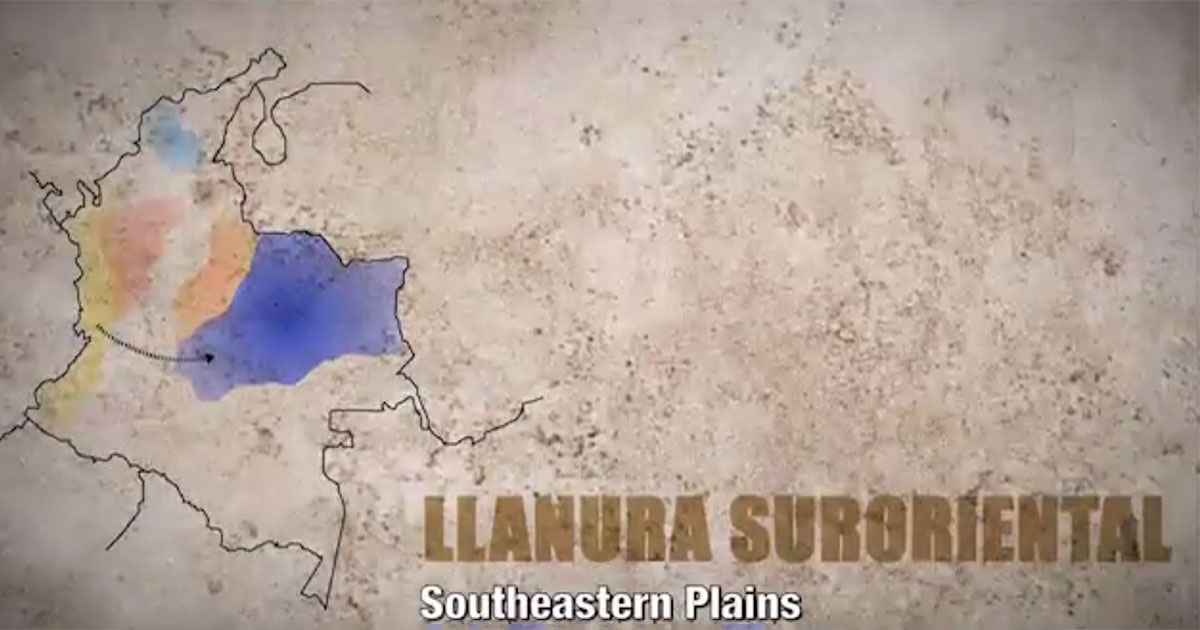
The Southeastern Plains, one of the world's largest river basins, covers an extensive territory shared by Colombia and Venezuela and framed by the Orinoco River. Map designed by Sandy Wang

The Southeastern Plains, one of the world's largest river basins, covers an extensive territory shared by Colombia and Venezuela and framed by the Orinoco River. Map designed by Sandy Wang
The Southeastern plains are part of one of the world's largest river basins, an extensive territory shared by Colombia and Venezuela and framed by the Orinoco River. Andean jungles, forests along the rivers, palm groves, and grasslands dominate the landscape. In the winter, rushing rivers and numerous streams and creeks flood the plains and great savannahs of the region.






Seasonal cycles of hot and humid climate with heavy rains followed by months of drought define the work and daily routines of local inhabitants. The principal livelihoods in the region are agriculture, hunting, and cattle ranching. With the herd and the ranch as the basic production units, a ranching culture has developed based on the knowledge and management of cattle and horses. Leather craftsmen have developed skills through years of work with the herd, designing and fashioning saddles, hammocks, and ropes that are staples of daily life in the region. Cattle herders have a distinctive song tradition with lyrics for calling cattle. Beef-based foodways traditions also contribute to the overall lifestyle of llanos culture.
The Southeastern Plains are also home to indigenous populations, such as the Sikuani, who display their sacred cosmology as they craft ceremonial stools, canoes, and weavings with detailed designs that are rich in symbolic meaning associated with the llanos.


